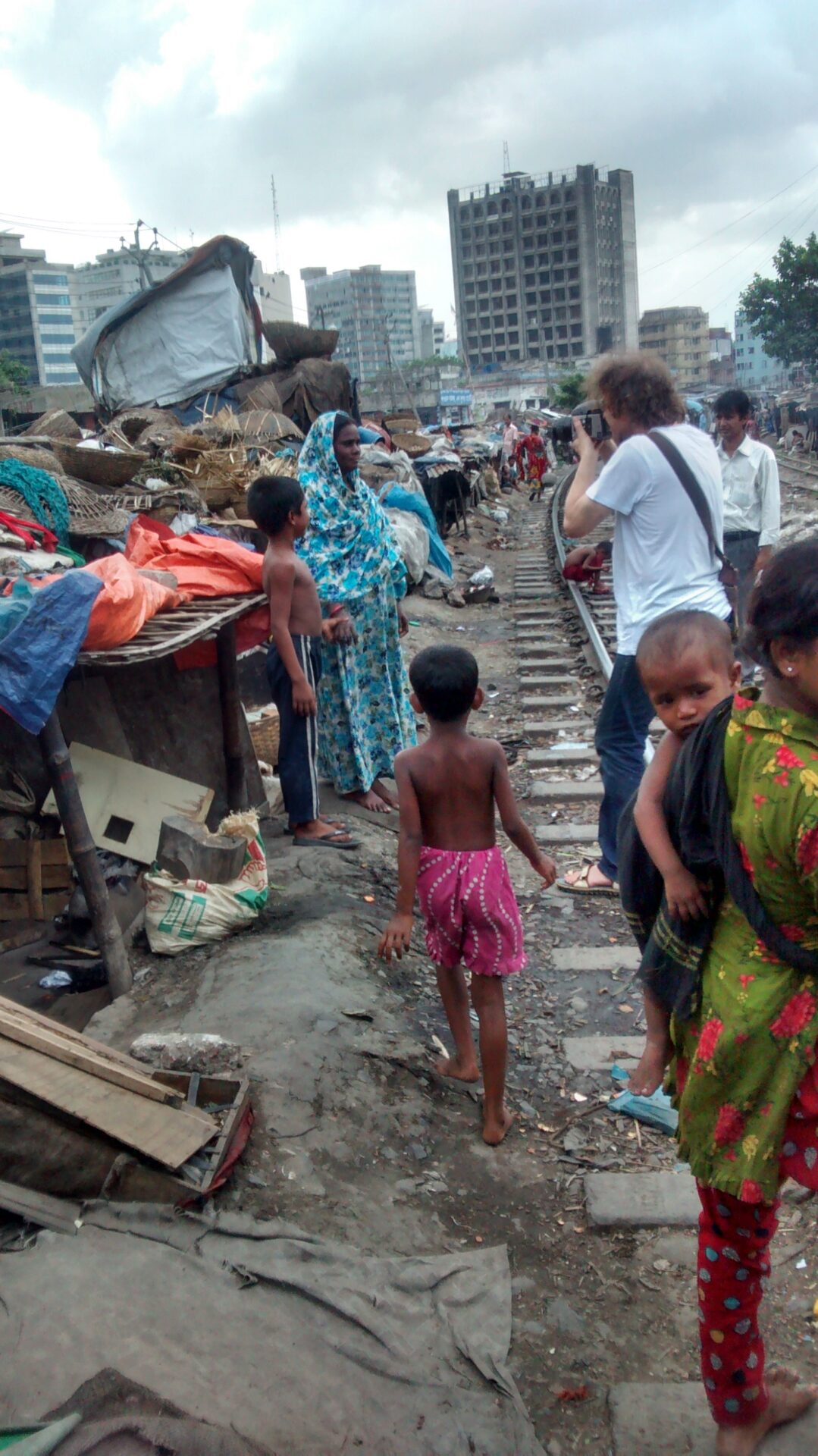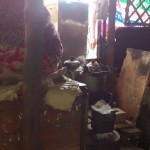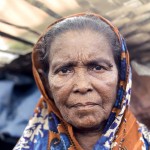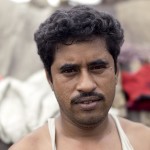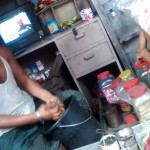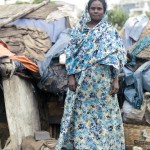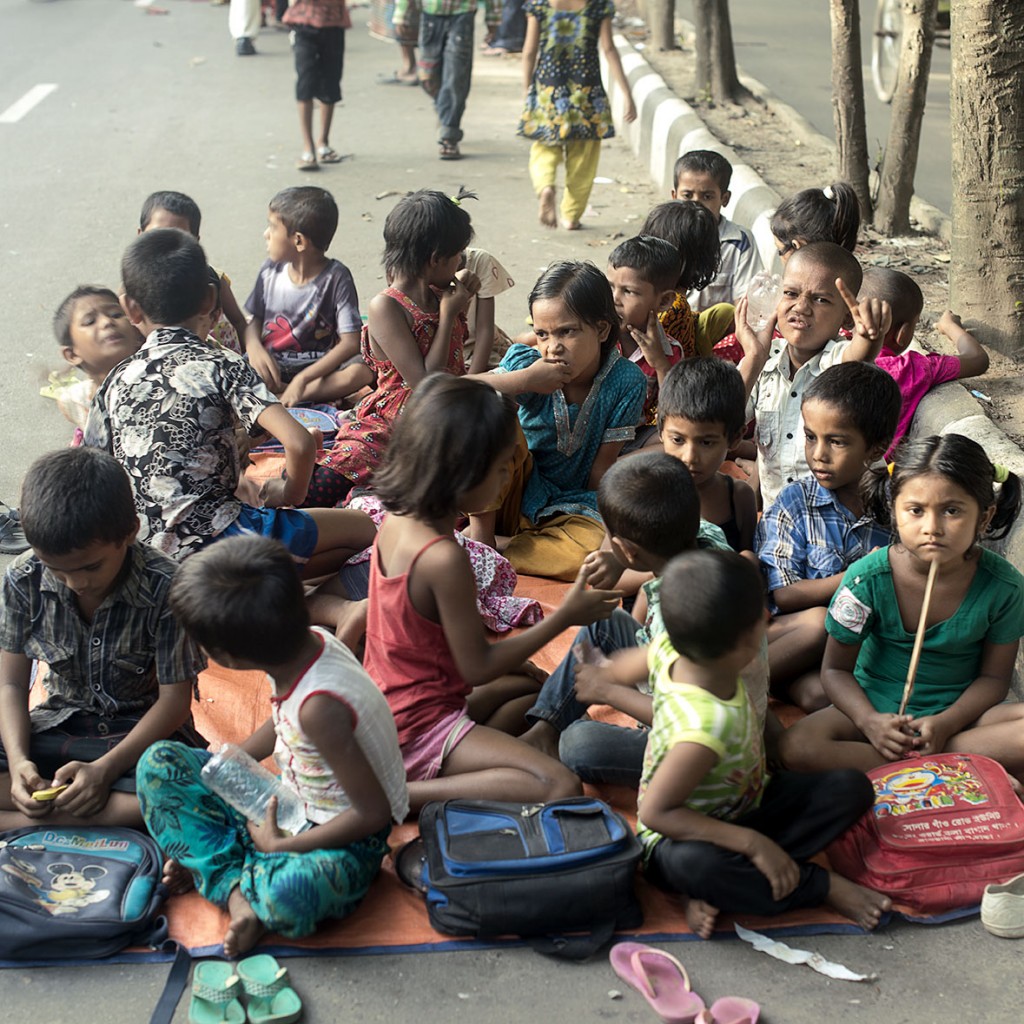14/07/2014, by Sabya van Elswijk,
This morning we went with Raj in the car to meet Emran in a teastall (cha dokan) near his house. Welcoming us to their teastall, a man, his wife and son shook hands, and we got cha fresh from the kettle that is there on fire all day. Emran said that this is a place he goes very often. After some time streetboys came in to see Sét, our blond son, and the owners told them to go. Sét went with them and Raj outside to play. We were talking about the coming day, and where to go to meet homeless people and portray them. Who is homeless? There are people living alongside the railroad tracks in little huts of wood / plastic. Some of them are living there for 15 or 20 years already. We go there today.
When we enter the railroad tracks people are walking there, bringing food from the market. After a while there are no more shops, but tiny, cavelike openings in the ground next to the railroad. We stop in a cha dokan, and sit behind the plastic cloth that is in front of the tea stall, out of respect for the fasting of Ramadan. Outside there is a gathering of boys, girls, women with their children and some men, trying to look at us, some asking ‘What’s your name?’.
The owner of the tea stall is telling Emran he has been living there for 15 years, with his wife and youngest son. They sleep at wooden boards in the same space as the tea stall. His older son lives with his mother in a village outside Dhaka. There is no space for him here. After drinking cha, Martijn photographs him in front of his place .
Then we walk on, and Emran bends down to talk to a woman in a tiny place. We cannot see inside because of the darkness there. We are invite to come in, and I enter the place. There I see a woman of age sitting on wooden boards, just a meter from the sand floor. Everything looks clean and there is a tiny room behind more wooden boards where a young man is sleeping beneath a fan. The woman shows her kitchen place with her hand. Later she tells Emran they are living here for 20 years, and that she is (only) 45 years old.
A man comes through the crowd that has gathered in front of her shack, and asks us where we are from in English. He invites us to his shack, where his sister in law is sleeping. She peeps her head out of the opening between 2 plastic sheets. He tells Emran he is 60 years old and works as a security guard, he has a strong politically involvement also. They have been living here for 20 years now. While we are sitting in front of his shack, many people gather around us, wanting to touch Sét and looking. Then there starts a discussion in Bangla, and Emran tells us that they are telling about foreigners who came before and made pictures, and that they saw their own pictures in the paper later on. Someone from the crowd thinks the foreigners benefit from this, and why should they not benefit? Others respond that not everybody is like this, and it is impossible to pay all poor people in Bangladesh. After taking his portrait we shake hands and return along the railroad tracks, standing aside for the passing trains when they come.
